Csákányospuszta church ruin
Location
Tatabánya
Date of construction
turn of the 12th–13th centuries
Year of restoration
2024
Category
Other facilities
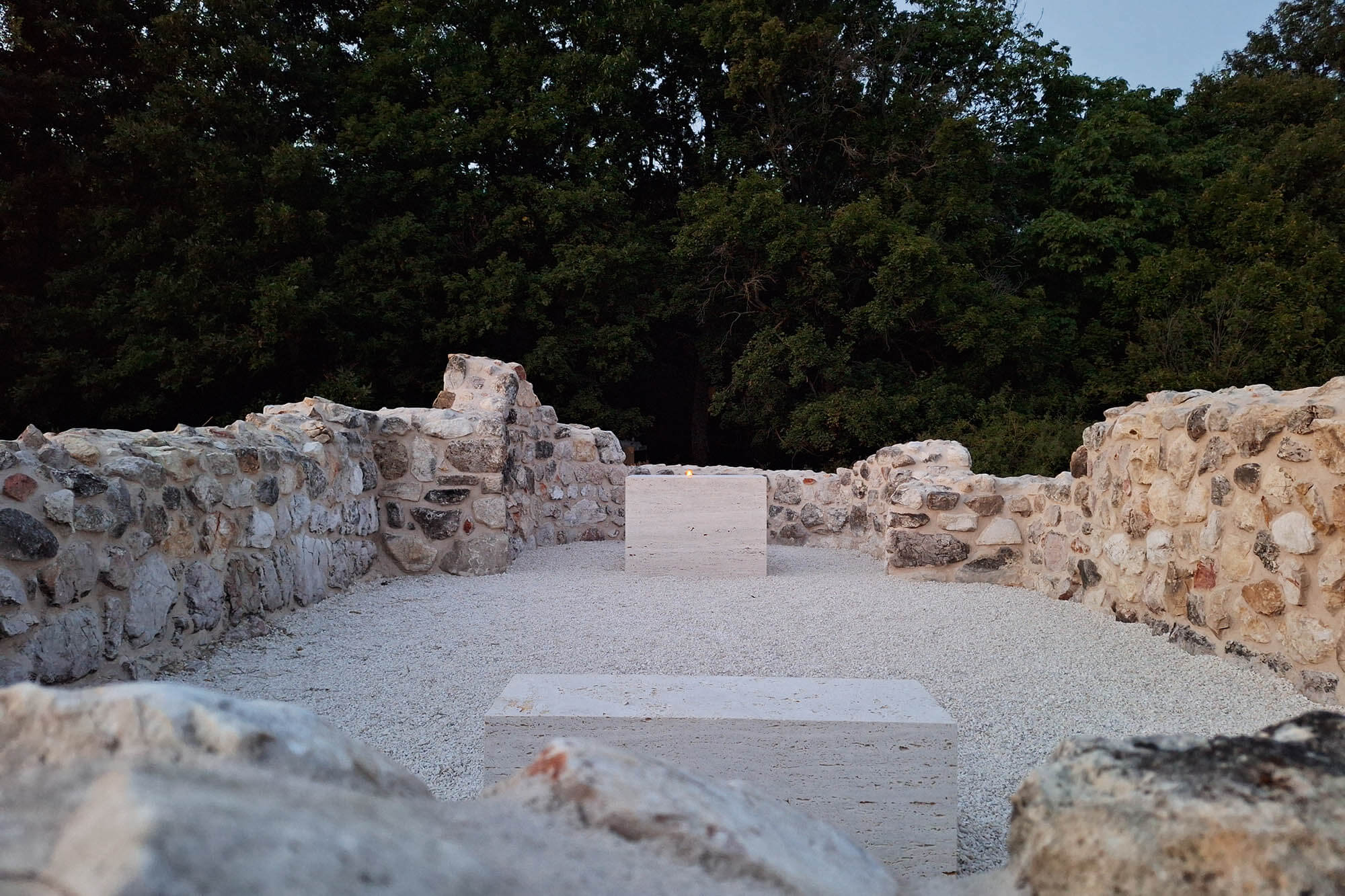
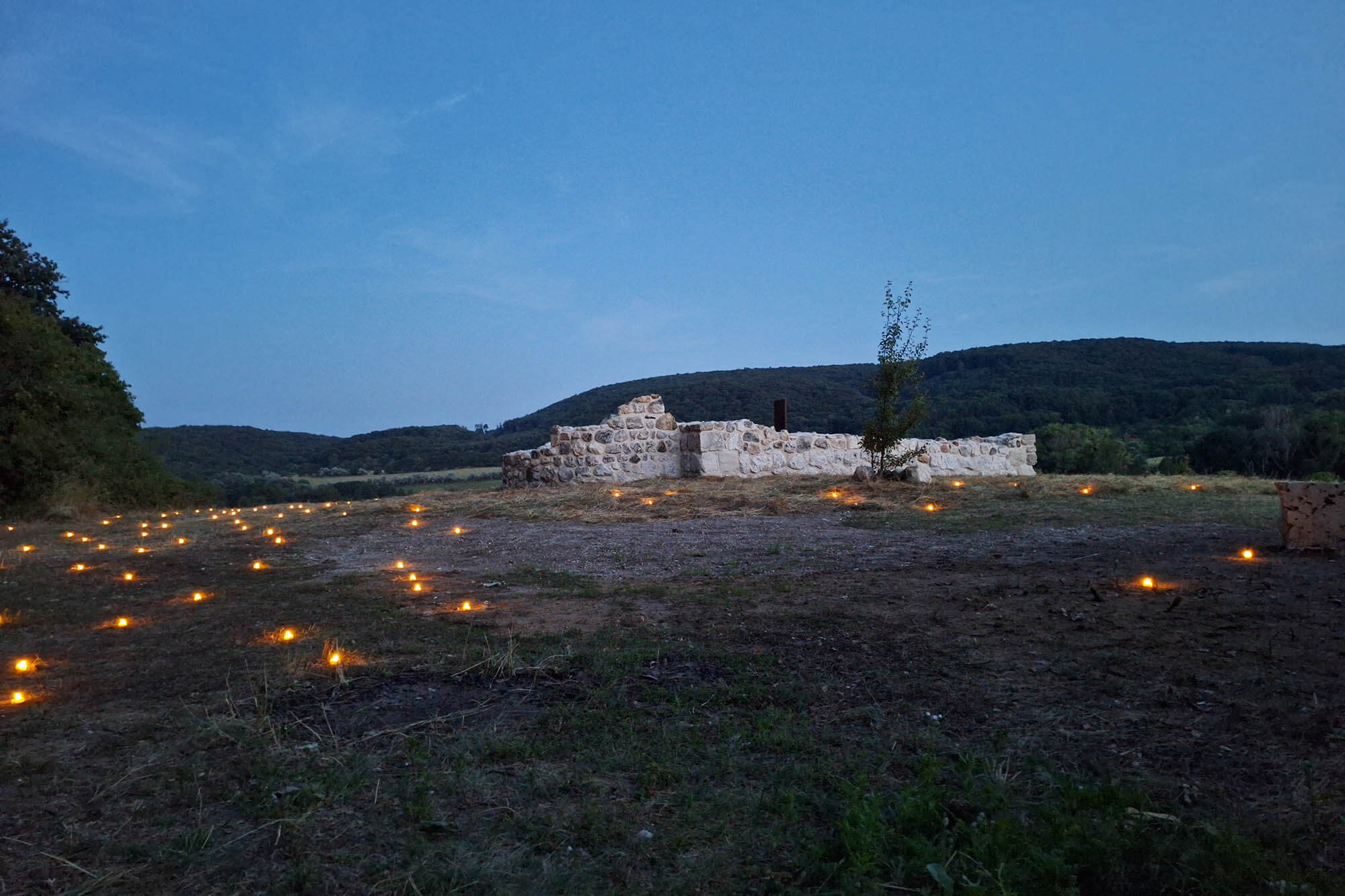
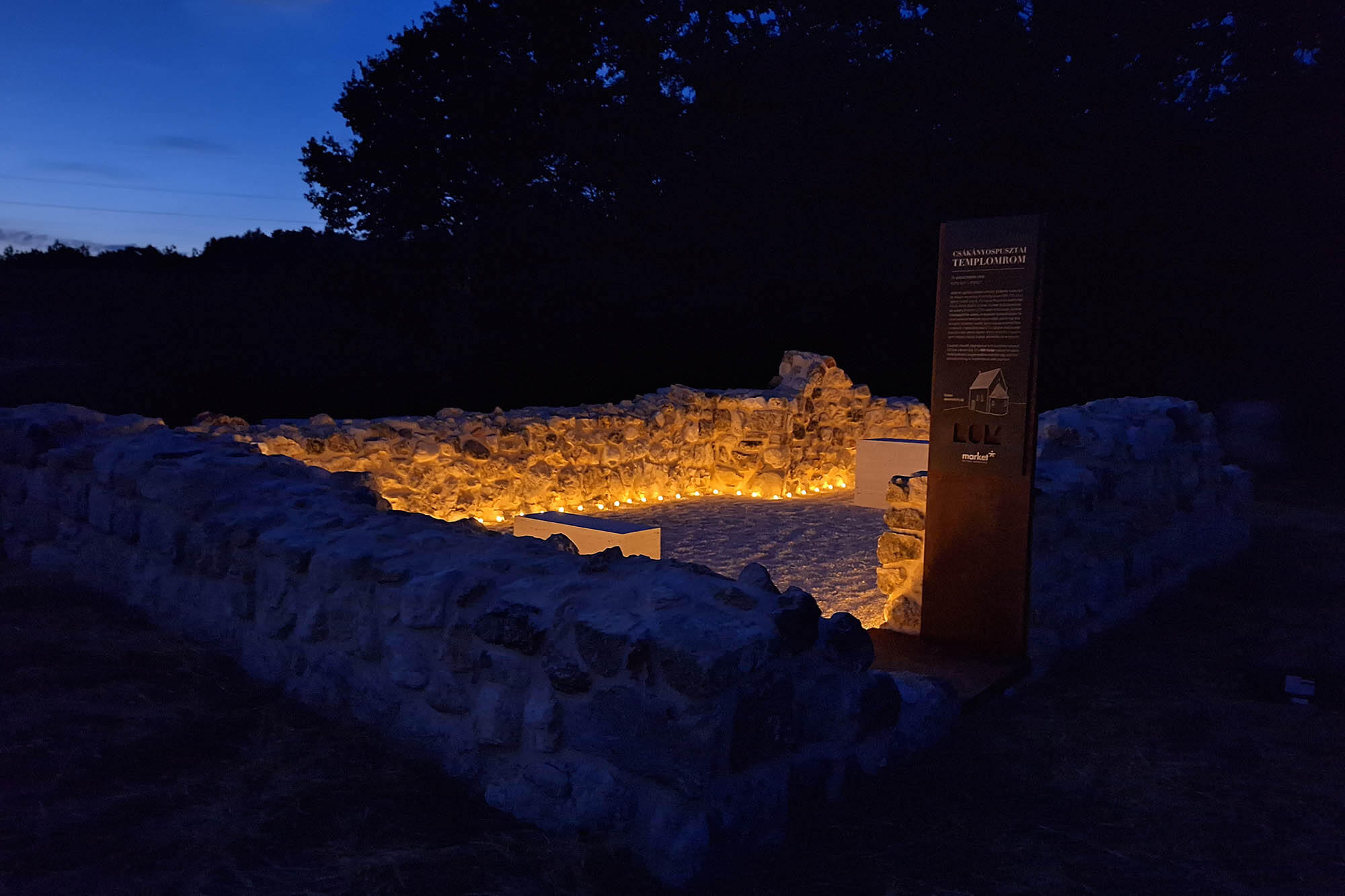
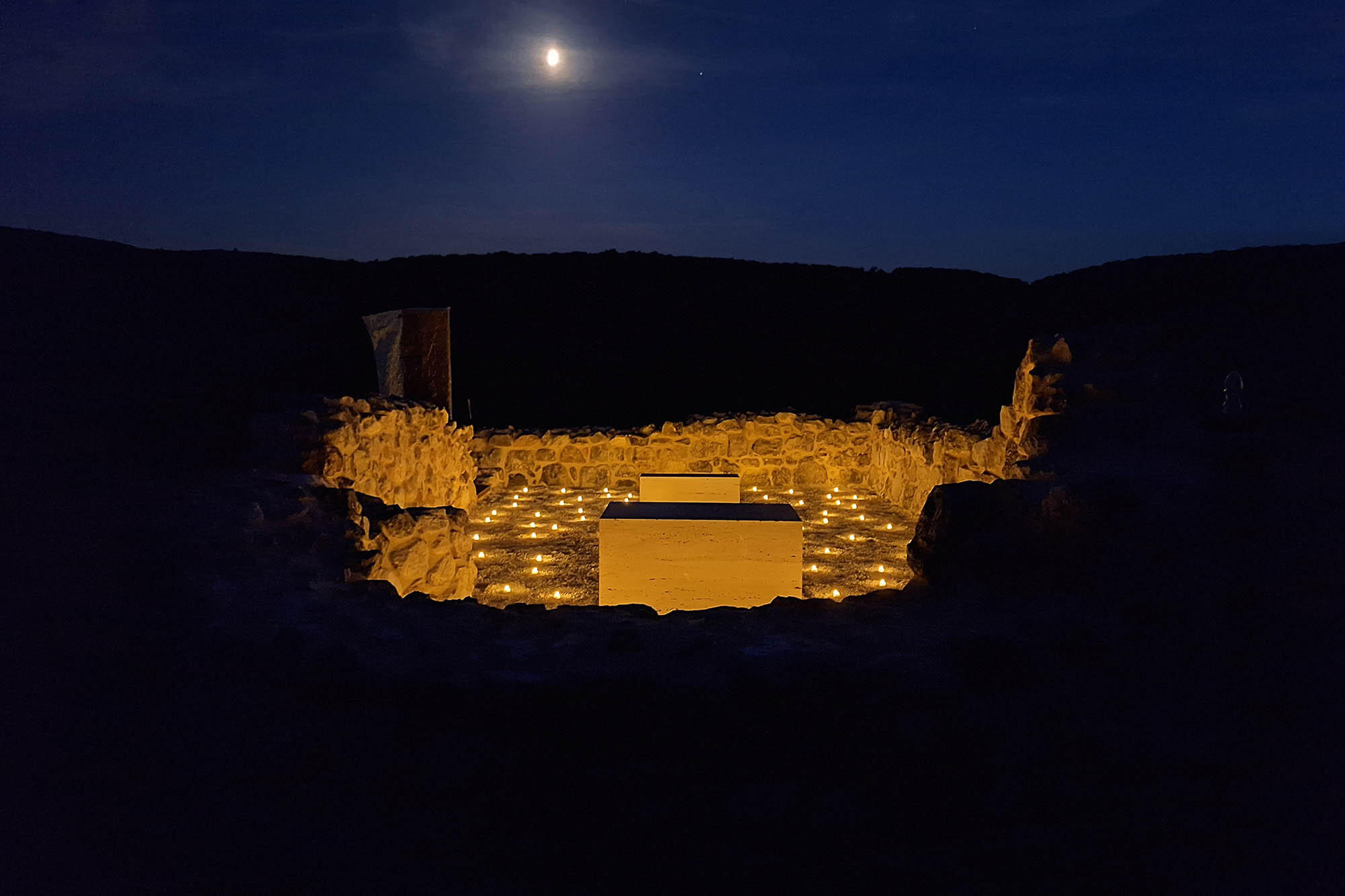
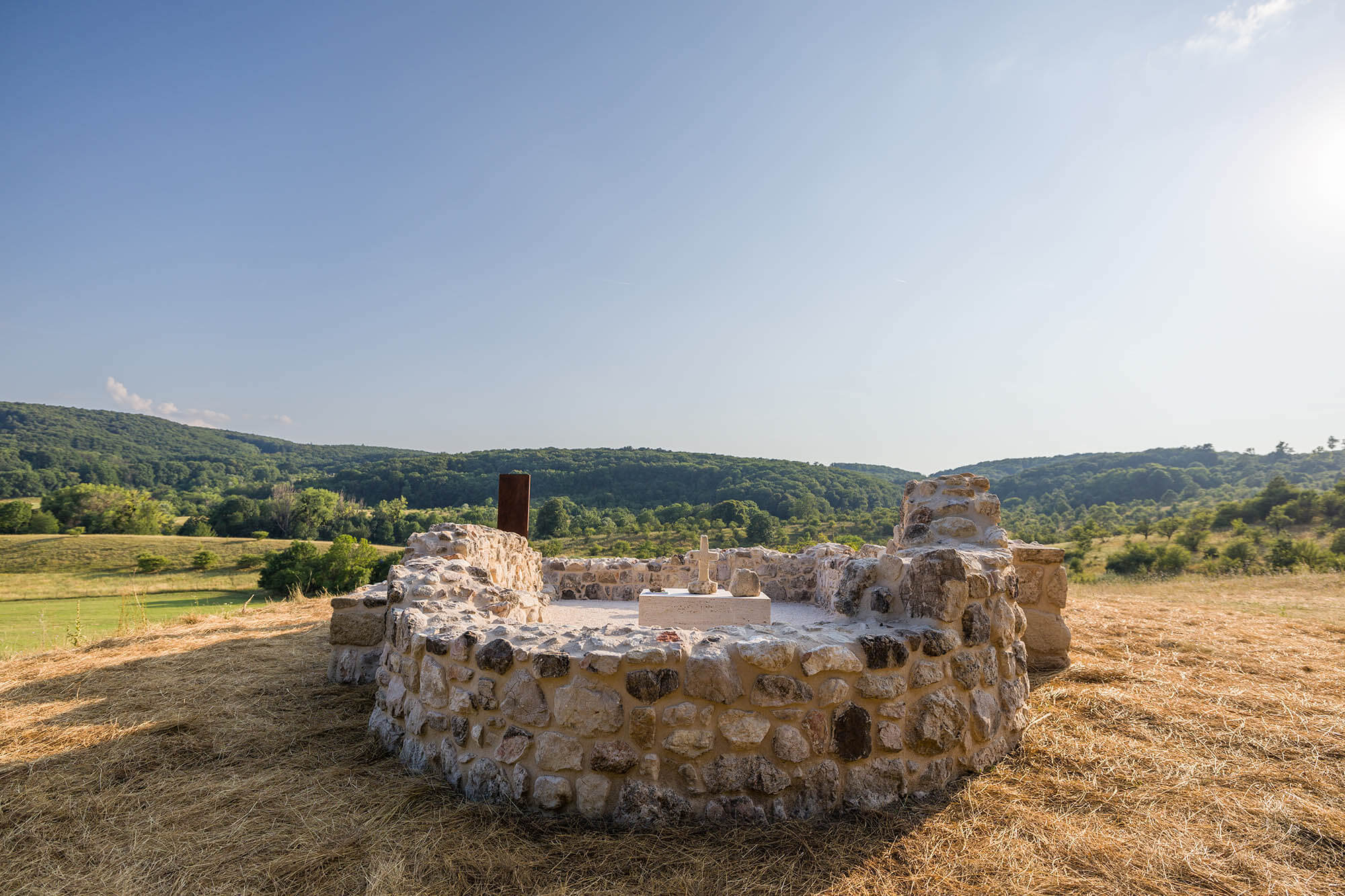
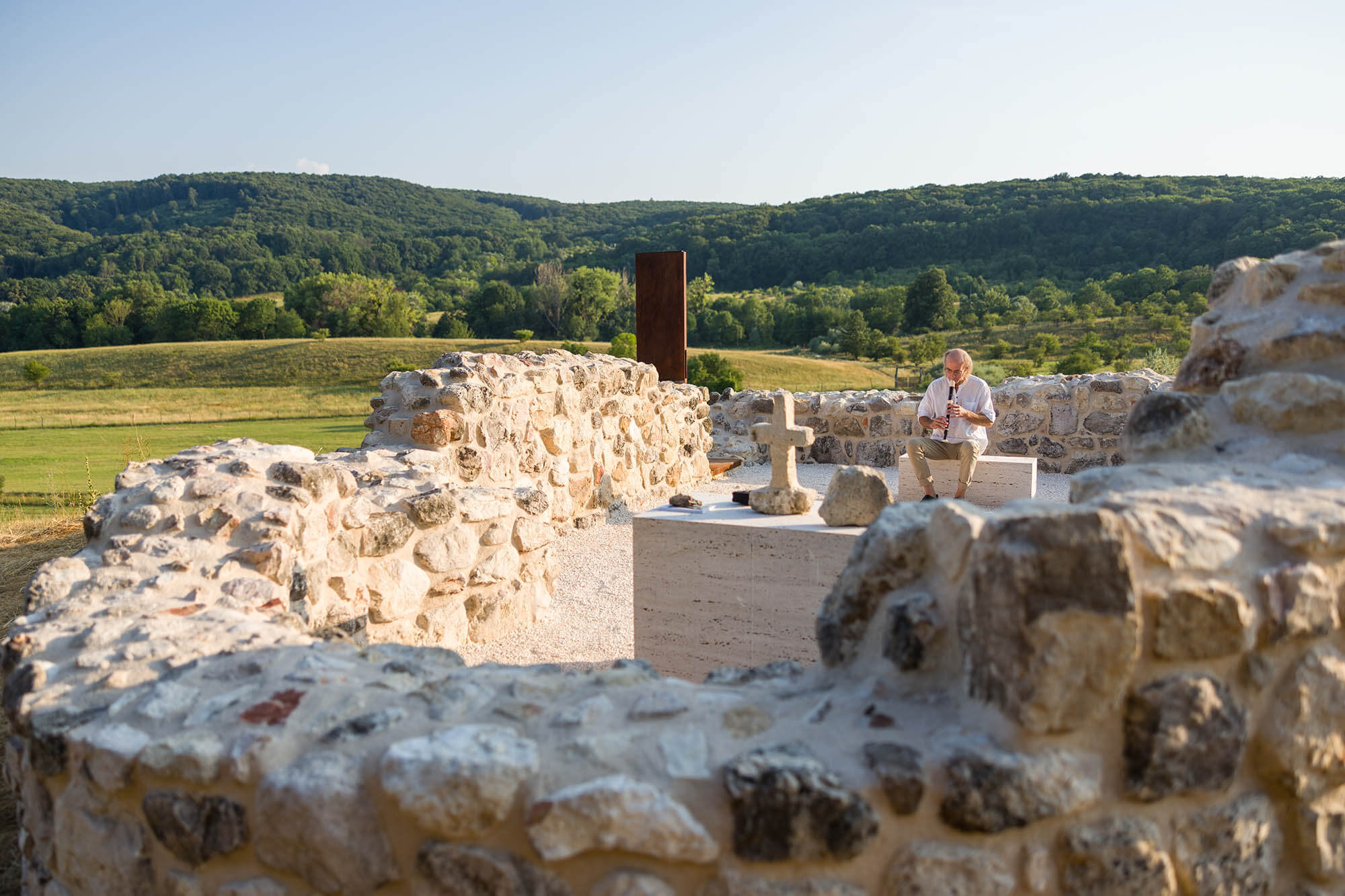
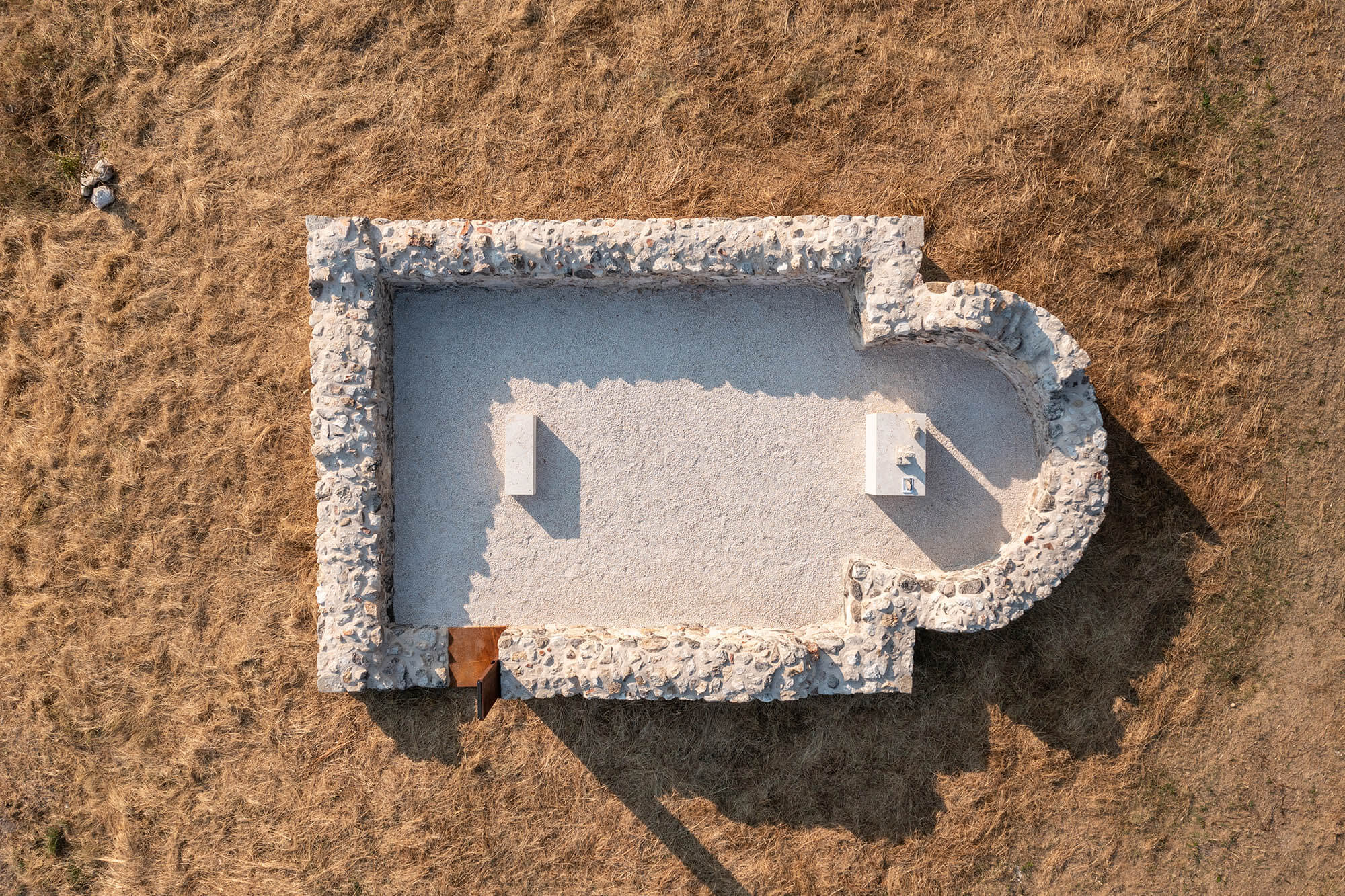
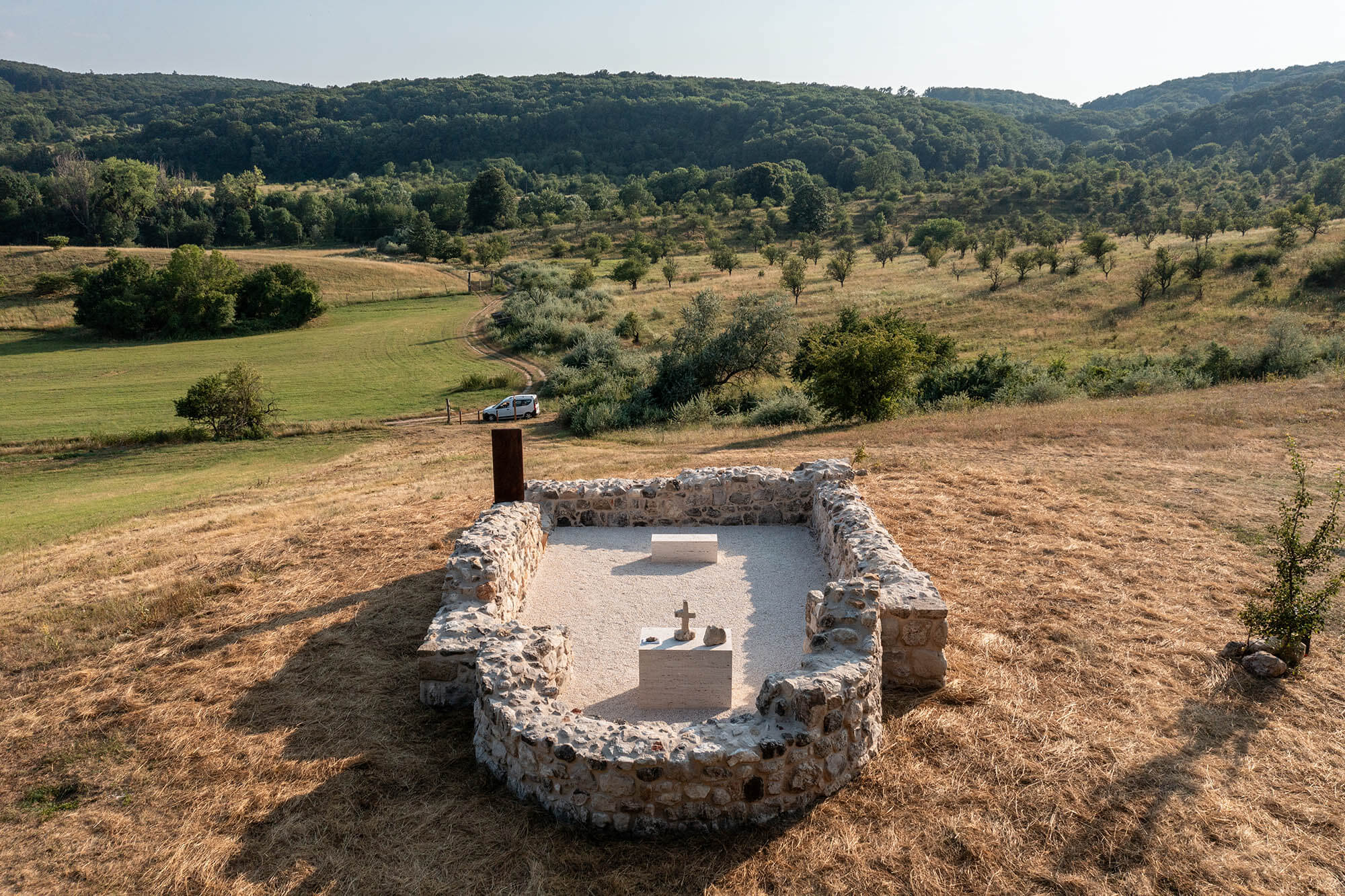
ROM Vándor (Ruin Rover), the complex corporate social responsibility programme of Market Építő Zrt., has completed its third phase with the restoration of the Csákányospuszta church ruins located on the outskirts of Tatabánya. The aim of our programme is to preserve our built heritage, especially our sacred medieval ruins, and make them accessible to the community. Our company coordinated and fully financed – from its own resources – the specialist preparations, permits and implementation required for the conservation of the ruin, thereby saving Tatabánya’s only surviving architectural heritage from the Árpád era.
The church was originally a small single-nave building with a horseshoe-shaped apse and a north-eastern orientation, constructed at the turn of the 12th and 13th centuries for the village of Csákányegyház. Archaeological excavations carried out between 2003 and 2005 revealed 144 graves and numerous carved stone fragments, including façade cornices, window frames and holy-water stoups. The settlement became depopulated in the 15th century, and over the centuries the remains of the church were partly carried away. Thus, our work under the ROM Vándor programme to rescue the site quite literally took place “at the eleventh hour”.
During the restoration, we professionally conserved the medieval stone walls and supplemented the missing sections with original stones under the professional supervision of the Tatabánya Museum. The function of the sacred space is emphasised by a stone-block altar and stone bench, while an L-shaped Corten steel structure marks the location of the ruins at the gate, and an information board and ruin diary help visitors find their way around. At the former entrance, an L-shaped Corten steel structure marks the place of the ruin, while visitors are supported with an information board and a ruin diary. As part of the landscaping, we created a designated firepit area, and an information panel at the access road presents the historical, ecological and archaeological values of the site.
A special feature of the project was the active participation of our employees in voluntary work: nearly twenty colleagues built bird boxes for the protected wryneck (Jynx torquilla). Straw was laid to encourage faster re-vegetation, and 144 candles were lit to mark the excavated grave sites. The ruin has since been granted official listed status, and the land has been transferred to municipal ownership, ensuring both long-term preservation and community access.
The restored church ruin opened its gates on 18 July 2024, and today it is not only a historical monument, but also a living, visitable sacred space, serving as a valuable location for our community.

